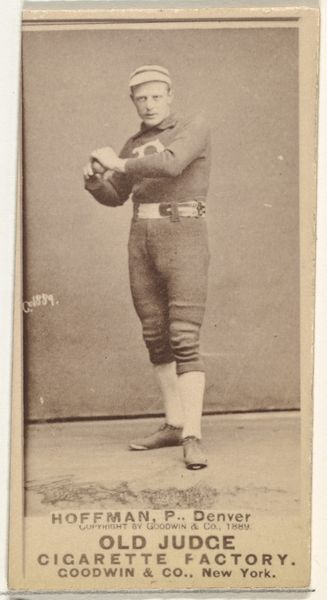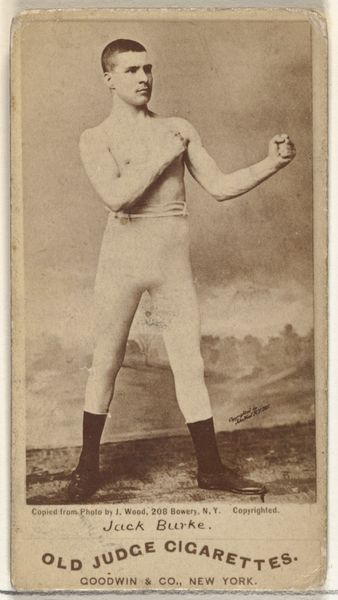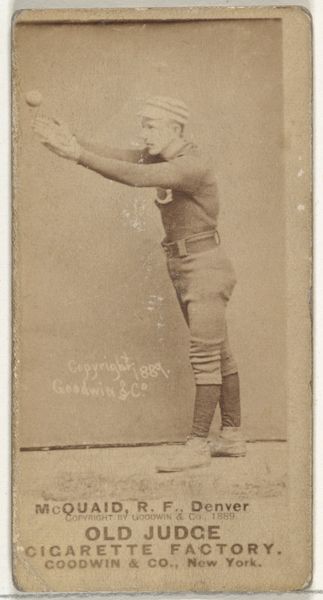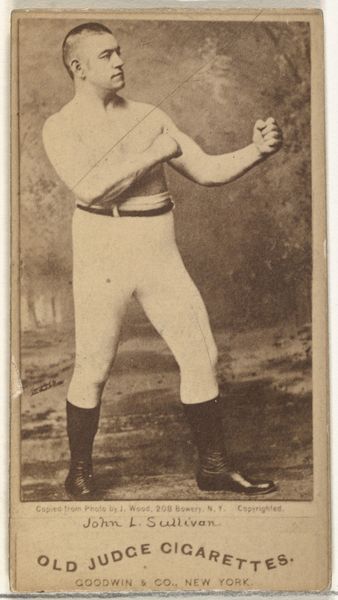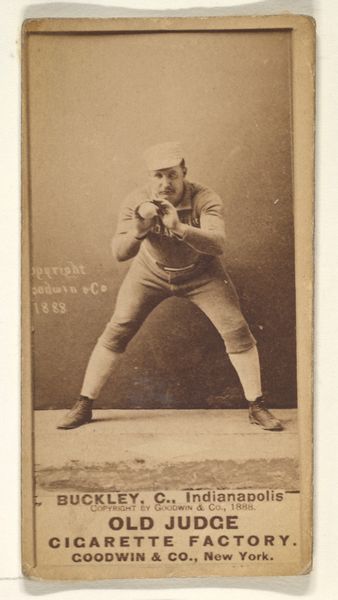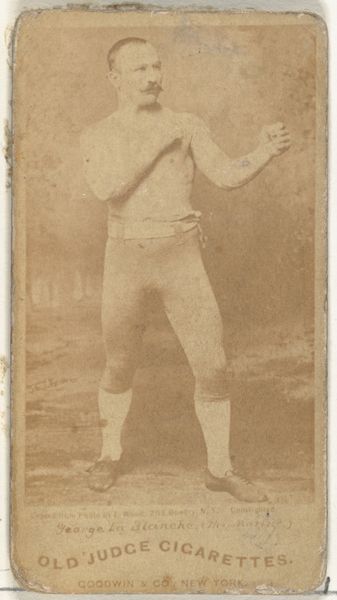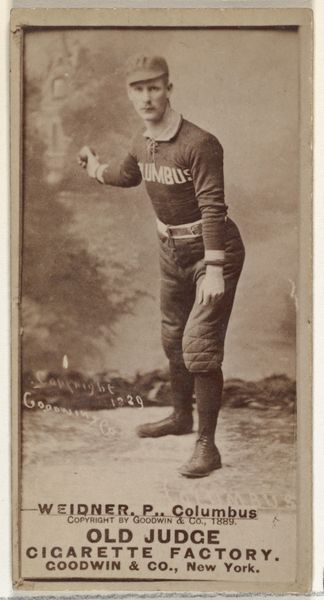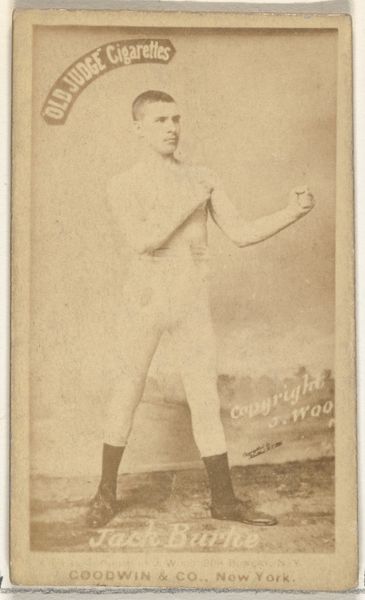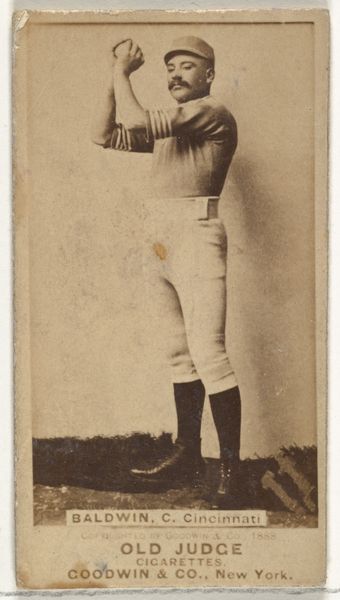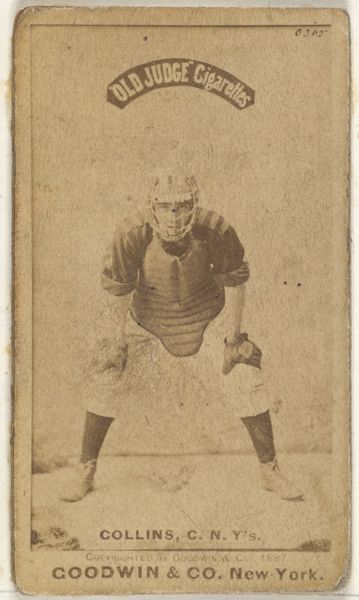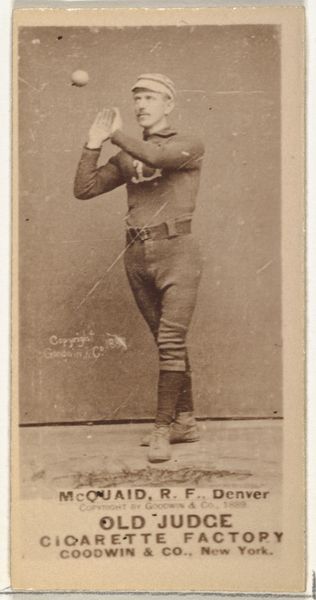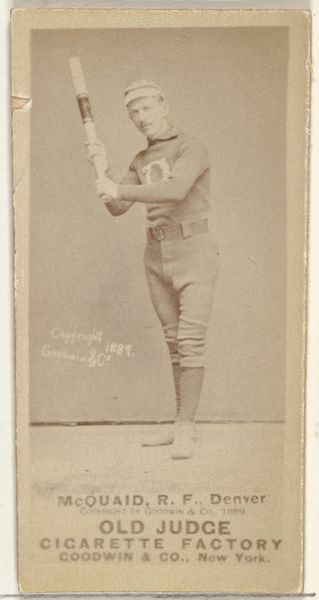
William Darnbrough, Pitcher, Denver, from the Old Judge series (N172) for Old Judge Cigarettes 1889
0:00
0:00
drawing, print, photography, albumen-print
#
portrait
#
drawing
#
aged paper
#
toned paper
#
photo restoration
# print
#
baseball
#
photography
#
men
#
albumen-print
Dimensions: sheet: 2 11/16 x 1 3/8 in. (6.9 x 3.5 cm)
Copyright: Public Domain
Curator: Let’s turn our attention to this albumen print from 1889, titled “William Darnbrough, Pitcher, Denver, from the Old Judge series (N172) for Old Judge Cigarettes,” produced by Goodwin & Company. Editor: It's arresting. There's an immediacy to the portrait. The slightly faded tone gives it a ghostly presence but the direct gaze of the man is confrontational. Curator: Exactly. These cards, distributed with Old Judge Cigarettes, became immensely popular. They speak to the rise of consumer culture, using figures like Darnbrough to associate ideals of athleticism with the act of smoking. Editor: The composition is striking. The diamond shape on his sleeve disrupts the formality of the otherwise symmetrical composition. I'm curious about the color – it's been muted by time but what was the original palette intended to convey? Curator: That diamond, though faded now, along with the word "Denver" is pivotal. We can decode it now – not just about baseball but labor conditions. This baseball player became a consumable item within capitalist structure. This tells us about American obsession with labor. Editor: Indeed. The subject's position with the baseball behind him, suggests latent power, but is framed by the consumerism the brand tries to promote. Even his stance creates subtle diagonal tensions that animate the small format of this print. It goes beyond merely promoting cigarettes and taps into contemporary aspirations. Curator: The cigarette cards also reinforced and solidified social hierarchies. Sports figures like Darnbrough became paragons. The format made it a collector's item to reify those same values. It underscores ideas related to athleticism, which only some segments of society had the time and resources to do. Editor: You’re right; considering the context, this ordinary composition suddenly pulsates with many readings. The sepia tone further intensifies this layering and speaks of a lost era—perhaps intentionally nostalgic even at its point of creation. Curator: It pushes us to question whose history is memorialized and at whose expense. Darnbrough, by simply being depicted as an athlete, stood as a point for marketing. Editor: I find myself drawn to how it uses formal artistic methods and also is embedded within the American economic system. Curator: The confluence reminds me of just how complicated and interwoven the art world can be with economic values.
Comments
No comments
Be the first to comment and join the conversation on the ultimate creative platform.
